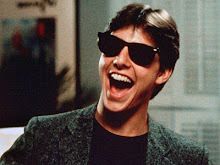J.K. Rowling and Stephanie Meyer are credited with turning youth back onto books, but where does one turn after the fat tomes of Harry Potter and Twilight have weaved their way through their own copious plotlines to the (alleged) final, epic endings? The answer is, of course, to a Popular Penguin. Every 18 year old owns a minimum of one. They're cheap (a plus, as young people are generally poor, and prefer to spend their money on drugs than novels), the available titles are steeped in merit (let's face it, Humbert Humbert has waaay more literary cred than Bella Swan), and they seem to have accidentally evolved into a subtle cultural signifier of our times. The Popular Penguin is the quickest way to get a brief overview of a person and reduce them to a cultural stereotype. Ostentatious hipsters gorge on the Hunter S. Thompson and Kerouac titles, whilst Brodan-esque Moarchists choose Empire: How Britain Made the Modern World and other apt volumes. I once received a distressed text message from a bookseller friend about an acquiantance we mutually believed was interesting. "He just came in and bought the most boring PP titles," the message read, "I'm so disappointed and confused." The PP covers are a polarising issue. Opinions are torn on whether the simple orange and cream covers scream "classic academia" or the end of the Chip Kidd book cover dream. (A friend recently claimed the books looked like a Monte Carlo biscuit in reverse, and dubbed them "too ugly" for his bookshelf. I kind of agreed). Love them or loathe them, the Popular Penguins are here to stay with another 50 titles being released tomorrow, and word is they're so good, Nicola "climaxed" when she read the upcoming titles online.

